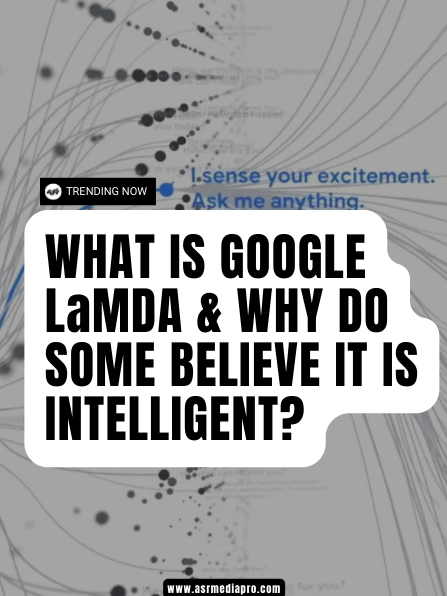
7 Ways Telephony and CRM Tools Can Help Your Business
7 Ways Telephony and CRM Tools Can Help Your Business Technology has altered how we conduct business. Indeed, technological advancements have improved how companies conduct
Simply called Meta, Mark Zuckerberg’s virtual reality world, has experienced a variety of setbacks, ranging from worker retention challenges to technical difficulties. That doesn’t mean that billions of people won’t soon utilise it. A new issue has been plaguing Meta. Is everyone able to build their own facial designs in the same virtual environment? Or will businesses and politicians have more freedom to change how they look?
Senior information scientist Rand Waltzman works for the nonprofit RAND Institute. He forewarned this week that Facebook may boost its Meta by using the insights it has gained from tailoring news streams and permitting hyper-targeted information.
Even speakers in this Meta can be altered to make them seem more reliable to each audience member. Without the audience member’s knowledge, a speaker might be altered to have 40% of that audience member’s features using deepfake technology, which produces realistic but faked videos.
Meta has already taken steps to address the issue. Other businesses, though, don’t hesitate. Project Origin was started by The New York Times and CBC Radio Canada two years ago to provide the technologies needed to demonstrate that a communication originated from its source.
The Coalition for Content Provenance and Authenticity currently has Project Origin, Adobe, Intel, and Sony among its members. Early versions of the Project Origin software, such as those that track the internet information’s origins, are already accessible. Who will use them, we wonder now?
Bruce MacCormack, senior advisor for disinformation defence programmes at CBC Radio-Canada and co-leader of Project Origin, believes that we can provide more information to help people verify the reliability of the material they’re getting.
Facebook must determine whether to use information in their system and how to incorporate it into their algorithms and other systems, over which we have no control.
Software called Project Origin, which was established in 2020, enables viewers to ascertain whether the information claimed to have come from a reliable news source and to confirm it. The absence of manipulation is indicated by this.
As would be feasible in future iterations of the so-called Web3, the technology tags information with data about where it comes from that moves with it as it is copied and redistributed rather than relying on blockchain or another distributed ledger technology. Members were given access to an early version of this programme that is already usable, he claimed.
There are more than simply fake news problems with Meta. In February 2021, the non-profit co-launched the Coalition for Content Provenance and Authenticity to establish the legitimacy of various forms of intellectual property.
This was done to reduce overlap between Project Origin’s solutions and other comparable technology targeting various types of deception—as well as to ensure the solutions interoperate. The Content Authenticity Initiative is run by Adobe, which is listed on the Blockchain 50 List.
This endeavour, which was launched in October 2021, would demonstrate that the NFTs produced by the programme are genuinely the artist’s original works.
We decided we actually had the same approach and were moving in the same direction around a year and a half ago, adds MacCormack. “We wanted to be certain that we arrived in one location. Additionally, we didn’t develop two rival technology sets.
Deep fakes are detected using Meta. Information mistrust is a problem. The Partnership on AI was created by MacCormack and Google. In September 2016, MacCormack and IBM advise was established. It attempts to raise the standard of technologies used to produce deep fakes.
The Deep Fake Detection Challenge findings from the social network were made public in June 2020. These revealed that just 65% of fakes were caught by software.
Fixing the issue will have an impact on more and more businesses’ bottom lines in addition to being a moral one. According to research conducted by McKinsey, investments in the metaverse for the first half of 2022 have already doubled.
They also predicted that the sector would be worth $5 trillion by 2030. This boom could become a bust if the metaverse is filled with false information.
According to MacCormack, depth fake software advances more quickly than implementation time. They chose to emphasise the ability of information to be confirmed to have originated from the source for one reason. “By virtue of the way artificial intelligence functions, the detection systems will only improve the fakes if they are released into the wild. And they planned to improve things very quickly, to the point where a tool’s lifespan or lifecycle would be less than the time needed to install it, thereby making it impossible to introduce it to the market.
MacCormack predicts that the issue will only worsen. Stable Diffusion, a new rival to Sam Altman’s Dall-E software that enables users to create realistic images just by describing them, released its source code for usage last week. That indicates, in MacCormack’s opinion, that measures that OpenAI put in place to stop particular kinds of material from being produced will eventually be gotten around.
According to MacCormack, this is comparable to nuclear non-proliferation. “Once something is public, it remains public. Because there were no controls in place when the code was published, it is expected that malicious use cases will start to increase significantly over the next few months.

7 Ways Telephony and CRM Tools Can Help Your Business Technology has altered how we conduct business. Indeed, technological advancements have improved how companies conduct

This Pixel 4 Can Recognize Life-Changing Diseases Developers from all over the world are attempting to simplify our lives by incorporating numerous new and cutting-edge

What Is Google LaMDA and Why Do Some Believe It Is Intelligent? LaMDA has been in the news after a Google engineer asserted that it
